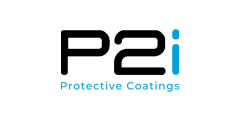How P2i Have Helped Make the Dream of Foldable Smartphones A Reality

Manufacturers are driven by consumer demand. A recent survey revealed two of the top four drivers of smartphone purchases in India were “battery life” and “display quality”. Given this, a best practice approach for designers might be to make a bigger device. Such a device would allow for a larger, longer-lasting battery and a bigger, better display. But consumers don't want their devices to be too big. They want them to fit in their pockets.
Designers tried the phablet, which was popular during the early 2010s but it didn't supplant the smartphone, the top-selling version of which during 2020 was the iPhone 11 with a 6.06 inches display. Consumers may like the idea of a bigger display, they don't want unwieldy devices. That's why the concept of foldable smartphones has gained traction.

The biggest-selling factors for consumers of foldable phones, according to a recent survey of US respondents are that they are compact and easy to carry with a bigger display. Achieving this can be a challenge for designers but when they get it right, phones can be a hit with consumers. The Samsung Galaxy Z Flip sold out in 20 Countries, for instance.
Uptake is not without obstacles, however. Consumer concern around durability continues. Designers have to overcome this concern. That's not easy. The first foldable devices were plagued with issues but manufacturers have invested in developing the technology and subsequent releases have proved their robustness. Early adopters may be more forgiving of missing 'standard features, but for more mass-market appeal, designers will have to come up with new ways of delivering the same quality, including liquid protection. People expect this capability today. If you were to buy any of the leading flagship phone products, they would all have a level of liquid protection.
As a designer, you may have achieved a bigger screen and battery but you still have to design in your 'standard' features, including liquid protection. The difficulty of traditional mechanical seal solutions for liquid protection is they are not designed to be flexed or bent in any way. That's why they are used to seal rigid devices rather than devices with folding screens. If used on the latter, mechanical seals become quickly damaged and cease to protect the device from liquid entering and harming the internal electronics.
Nano-coatings, in contrast, allow for this movement and are not compromised over time. By protecting the internal components, they ensure water can repeatedly enter the device without the risk of liquid damage. P2i latest nano-coatings even deliver IPx8 protection as found on many flagship smartphones. They support design freedom and effectively enable flexibility. Other markets with moving parts, such as drones, are watching developments and are adopting liquid protection, as it is proven it can work effectively within these kinds of devices.
In creating electronic devices, manufacturers must have design freedom and that becomes more important the more the design differs from a standard format and the more movable parts it has. Manufacturers should never be constrained by components and technology being added to their products. That's core to the ethos of electronic product design and should be a priority for any electronic products manufacturer, choosing what solutions to add to their devices.
- +1 Like
- Add to Favorites
Recommend
- P2i‘ s Splash-proof hydrophobic and oleophobic nano-coating Protects Your Smart Home Security Devices From Liquid Damage
- ROHM‘s New Automotive LDO Regulators: Stable Operation at Nanoscale Output Capacitance Nano Cap™ technology solves capacitor issues, opening up new possibilities
- Ultra-Low IQ PMIC from ROHM Selected to Power NXP iMX8M Nano for High Performance Embedded Artists Industrial Control Board
- Nippon Chemi-Con announced The Advanced Technology Nano-hybrid Capacitor
- Nanochap‘s Physiological Signal Analog Front-End Chip BAF003 on Electrolyte Analyzer Characterized by Low Power Consumption
- TE Connectivity introduces the NanoRF Edge Launch connector for VITA 67.3 applications
- Nanochap Introduces Nerve Stimulation Chip Stim Engines Series ENS001 for Cochlear Implant, Charge Balance for Safety
- P2i is Taking Action on Resisting Liquids and Advancing Sustainability Revolution
This document is provided by Sekorm Platform for VIP exclusive service. The copyright is owned by Sekorm. Without authorization, any medias, websites or individual are not allowed to reprint. When authorizing the reprint, the link of www.sekorm.com must be indicated.





































































































































































































































































































































































































































































































































































































































































































































































































































